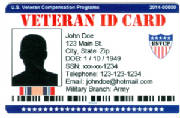|
|
|
|
|
|
Did You Know? Certain veterans and service members with service-connected disabilities may be entitled to a Specially Adapted Housing (SAH) grant from VA to help build a new specially adapted house or buy a house and modify it to meet their disability-related requirements. Eligible veterans or service members may now receive up to three grants, with the total dollar amount of the grants no to exceed the maximum allowable. Previous grant recipients who had received assistance of less than the current maximum allowable may be eligible for an additional SAH grant. Eligible veterans who are temporarily residing in a home owned by a family member may also receive assistance in the form of a grant to assist in the veteran in adapting the family member’s home to meet his or her special needs. Those eligible for a $50,000 total grant would be permitted to use up to $14,000 and those eligible for a $10,000 total grant would be permitted to use up to $2,000. (See eligibility requirements for a different grant amounts) However, VA is not authorized to make such grants available to assist active duty personnel. Eligibility for up to $50,000: VA may approve a grant of not more than 50 percent of the cost of building, buying, or adapting existing homes or paying to reduce indebtedness on a previous owned home that is being adapted, up to a maximum of $50,000. In certain instances, the full grant amount may be applied toward remodeling costs. Veterans and service members must be determined eligible to receive compensation for permanent and total service-connected disability due to one of the following: 1. Loss or loss of use of both lower extremities, such as to preclude locomotion without the aid of braces, crutches, canes or a wheelchair. 2. Loss or loss of use of both upper extremities at or above the elbow. 3. Blindness in both eyes, having only light perception, plus loss or loss of use of one lower extremity. 4. Loss or loss of use of one lower extremity together with (a) residuals of organic disease or injury, or (b) the loss or loss of use of one upper extremity which so affects the functions of balance or propulsion as to preclude locomotion without the use of braces, canes crutches or a wheelchair.
Eligibility for up to $10,000: VA may approve a grant for the cost, up to a maximum of $10,000, for necessary adaptations for a veteran’s or a service member’s residence or to help veterans and service members acquire a residence already adapted with a special features for their disability. To be eligible for this grant, veterans and service members must be entitled to compensation for permanent and total service-connected disability due to:
1. Blindness in both eyes with 5/200 visual acuity or less. 2. Or anatomical loss or loss of use of both hands.
Supplemental Financing: Veterans and service members with available loan guaranty entitlement may also obtain a guaranteed loan or a direct loan from VA to supplement the grant to acquire to specially adapted home. Amounts with a guaranteed loan from a private lender will vary, but the maximum direct loan from VA is $33,000.
Upgrade Your Discharge
Red River Veterans for Peace, Chapter 154, an affiliate of national Veterans for Peace, is committed to assisting veterans with the process of applying for discharge upgrades. If you are one of these veterans or know veterans who might be helped by this upgrade, please write to RRVFP with a statement of your issue, telephone number, and your name. Write to: RRVFP, P.O. Box 5612, Fargo, ND 58105. Someone will contact the veteran and find a time they can meet/talk and review the process required to submit an application for review. RRVFP will also help veterans find resources that can be helpful in assembling the petition for review.
Burial for Veteran & Spouse Veterans and their spouse can be buried at a national cemetery free of charge? Veteran must have military discharge documents (e.g., DD Form 214, DD Form 256, etc.) in order to be buried at a military cemetery. See your VSO to learn more about programs or call 1-800-827-1000.
|
|
|
|
|
|
|

